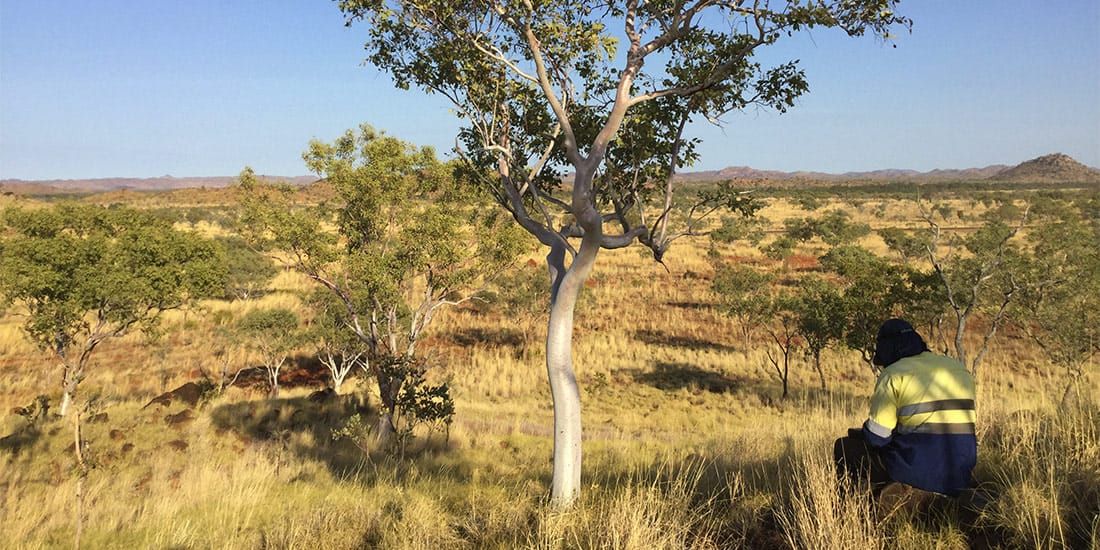Attention all nature enthusiasts! Brace yourself for an exciting journey where you’ll uncover the hidden secrets of the African savannah. Picture a vast, sun-drenched landscape stretching as far as the eye can see, painted in hues of gold and green. This is the savannah, a world where life teeters on a delicate balance between survival and abundance. Here, the plant and animal kingdoms, the flora and fauna, have adapted in extraordinary ways to thrive in a land of dramatic contrasts. Imagine majestic baobab trees, their intricate branches creating cozy homes for countless creatures, or acacia trees forming special alliances with ants—it’s a fascinating relationship that will make you rethink the bonds in nature. Get ready to unravel the interconnectedness of plants and animals, a web of life that makes the African savannah a vibrant and breathtaking spectacle.
Did you know that the savanna is home to some of the most fascinating creatures on Earth? From lions and elephants to zebras and giraffes, there’s no shortage of wildlife to observe. To learn more about this incredible ecosystem, check out our fun facts about the savanna.
Flora and Fauna Savannah
Imagine towering acacia trees, their branches reaching skyward like graceful arms, offering shade to creatures seeking respite from the intense heat. These iconic trees, along with the majestic baobabs, those ancient giants with their stout trunks and sprawling canopies, are landmarks in this sea of grass. But they’re more than just impressive sights; they’re lifelines in a world of constant change.
The plants of the savanna have evolved ingenious strategies to cope with long, dry spells. Some have deep roots that tap into hidden water reserves deep underground, while others, like succulents, store water in their thick leaves and stems. Their ability to flourish in such a demanding environment is a testament to their resilience.
And then there are the animals, each species uniquely equipped to navigate this challenging world. Grazers, like zebras with their bold stripes and the massive herds of wildebeest, are always on the move in search of fresh pastures. They’ve evolved fascinating grazing patterns, ensuring that they don’t overgraze and deplete their precious food source. Where you find prey animals, you’re bound to find predators. Lions, with their powerful roars that echo across the plains, and leopards, masters of camouflage, rely on their hunting skills to survive.
Unlike grasslands, which are characterized by a complete absence of trees, savannas are home to a variety of tree species. These trees provide food and shelter for the animals that live there. If you’re interested in learning more about the unique characteristics of savannas, be sure to read our article on savanna important facts.
But the savanna is not just a stage for individual struggles and adaptations. What makes it truly remarkable is the intricate web of connections between its inhabitants. Acacia trees, for instance, provide not just shade but also nourishing seedpods for birds and insects. Their leaves are a vital food source for elephants. And those herds of grazing herbivores? They’re not just hungry mouths; they help maintain the grasslands by preventing shrubs and trees from taking over.
The importance of the savanna extends far beyond its ecological wonders. It supports human livelihoods too, providing grazing land for cattle and attracting tourists from around the globe who come to witness its awe-inspiring beauty. What’s often overlooked is the savanna’s role in combating climate change. Its vegetation and soil are crucial carbon sinks, absorbing and storing carbon dioxide from the atmosphere.
Sadly, this extraordinary ecosystem faces growing threats, many stemming from human activities. Agriculture is expanding, encroaching on vital habitats. Urban areas are sprawling, fragmenting the landscape. And climate change, with its unpredictable rainfall patterns and increasing temperatures, adds another layer of pressure.
The good news is that efforts are underway to protect this precious biome. Protected areas are being established, offering safe havens for endangered species. Sustainable land management practices are being promoted, ensuring that resources are used responsibly. And community-based conservation initiatives are empowering local people to become stewards of their own environment.
There’s still much to be discovered about the intricate workings of the savanna. Ongoing research continues to shed light on the complex interactions between its flora and fauna, revealing ever more fascinating details about this extraordinary ecosystem. The more we learn, the better equipped we are to protect it for generations to come.
What Defines the Savannas Flora – Discovering the Plant Life
The savanna is more than just a sea of grass; it’s a vibrant tapestry of plant life, each species uniquely adapted to thrive in this challenging environment.
Trees: The Savanna’s Gentle Giants
Unlike grasslands, which are dominated by grasses, savannas are dotted with trees, their presence shaping the ecosystem. These trees, with their thick bark and high branches, have adapted to withstand the frequent fires that sweep through the savanna. The iconic acacia tree, with its umbrella-shaped top, is a characteristic feature of the African savanna, providing shade and sustenance to a variety of animals.
Grass: It’s Not Just for Show
The grasses of the savanna are not your average lawn grass. These tough species are fire-resistant, springing back to life quickly after a burn. They form the base of the food chain, supporting a diverse array of herbivores, from zebras and wildebeest to elephants.
Shrubs and Wildflowers: Adding Some Spice to the Mix
Shrubs and herbaceous plants, while less conspicuous than the trees and grasses, add to the biodiversity of the savanna. Bushwillows, with their silvery-green leaves, are common in East African savannas. During the rainy season, wildflowers erupt in a riot of color, adding to the beauty of the landscape.
Adapting to Thrive: Savanna Plants are Superheroes
Savanna plants have evolved an array of adaptations to cope with the challenges of their environment. Some have deep roots to tap into underground water sources, while others store water in their leaves or stems. Thorns are a common defense mechanism, deterring hungry herbivores.
Seasons of Change: A Year in the Savanna
The savanna experiences distinct wet and dry seasons, each bringing about dramatic changes in the landscape. During the wet season, grasses flourish, trees sprout new leaves, and the savanna teems with life. The dry season transforms the landscape into a sea of golden brown, as plants conserve water and animals migrate in search of resources.
Unraveling the Mysteries: There’s Still So Much to Learn!
Despite our growing knowledge of savanna plant life, much remains to be discovered. Scientists are constantly making new discoveries, unraveling the secrets of how these plants thrive in such a challenging environment.
A Closer Look at Savanna Fauna – Unveiling the Animal Kingdom
The savanna is home to an astonishing array of animal life, each species intricately connected to the ecosystem. From the iconic “Big Five” to the smallest insects, every creature plays a role in maintaining the delicate balance of this vibrant ecosystem.
Zebras, with their distinctive black and white stripes, are a common sight on the savanna. While the purpose of their stripes is still debated, some scientists believe they may serve to confuse predators, making it harder to single out an individual from the herd.
Lions, often referred to as the “king of the jungle” (despite not actually living in jungles), are apex predators in the savanna ecosystem. Their hunting success, however, is not guaranteed. Factors like prey availability, weather conditions, and competition from other predators like hyenas can influence their ability to secure a meal.
The savanna is also home to a plethora of smaller creatures, each contributing to the ecosystem in its unique way. Colorful birds fill the air with their songs, while dung beetles play a crucial role in nutrient recycling, breaking down animal dung and returning nutrients to the soil.
The savanna is a dynamic landscape, constantly changing and adapting. Researchers are continually making new discoveries about the complex relationships between its inhabitants, highlighting the importance of ongoing research and conservation efforts.
The Intricate Web – Understanding Flora and Fauna Interactions
The flora and fauna of the savanna are not isolated entities but rather participants in an intricate dance of life, each influencing the other in a delicate balance.
Plants, the primary producers of the ecosystem, harness energy from the sun to create food, forming the foundation of the food web. Animals, in turn, rely on plants (or other animals that have consumed plants) for sustenance.
Bees and butterflies, as they flit from flower to flower, play a crucial role in pollination. As they collect nectar, they inadvertently transfer pollen, facilitating plant reproduction. This mutually beneficial relationship highlights the interconnectedness of life in the savanna.
Competition for resources, such as sunlight, water, and nutrients, is a driving force in the savanna ecosystem. Plants have evolved various strategies to secure their share, from growing tall to outcompete their neighbors to spreading their roots wide to maximize water absorption.
Predators, such as lions, leopards, and even ladybugs, play a crucial role in regulating prey populations, preventing overgrazing and maintaining the delicate balance of the ecosystem. They are the unseen force that helps to ensure the long-term health of the savanna.
The environment itself, with its fluctuating climate, geographical features, and even human activities, can significantly impact flora and fauna interactions, influencing food availability, competition, and even predator-prey relationships.
Human activities, unfortunately, can have detrimental effects on these delicate interactions. Habitat destruction, pollution, and the introduction of invasive species can disrupt the natural balance, leading to biodiversity loss and ecosystem degradation.
Understanding the intricate web of life in the savanna is not just about appreciating the beauty of nature but also about recognizing our role in protecting it. By learning about these complex interactions, we can make more informed decisions that promote sustainability and ensure the health of this precious ecosystem for generations to come.
- Senior at What Age: Benefits & Eligibility Guide - March 29, 2025
- Unlocking Senior Benefits: How Old is a Senior? Your Complete Guide - March 29, 2025
- Master Russian Politeness:A Guide to Saying Please - March 29, 2025

















Comments are closed.